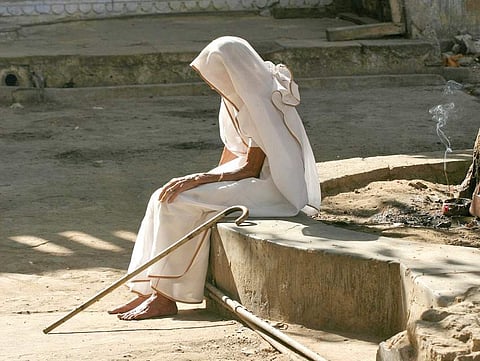

Ants are omnipresent in K R Meera’s The Poison of Love. Visually, of course, since each chapter is preceded by a black page with illustrations, in white, of ants. Ants, gathering; ants, beginning to swarm; ants, forming armies, turning ominous by dint of their sheer numbers.
But the visual element is only a small part of the book; ants feature prominently in the story itself. Armies of ants, devouring corpses, coming in thousands to take over the dead. The tormented protagonist, Tulsi, sees them everywhere.
Ants marching up a cot on which a dead woman lies. Ants, eating a snake and its half-swallowed prey, a rat. Even the monkeys that patrol the temples of Vrindavan, where Tulsi has washed up, appear to her like ants: crowding together, swarming, always in motion and always ready to pounce upon the weak.
As a story, The Poison of Love is a simple one. Tulsi, intelligent, well-educated and accomplished, is about to marry Vinay when she meets the charismatic Madhav, Vinay’s friend. Madhav makes no attempt to hide the fact that he is drawn to women, and they to him: he has had 27 lovers so far, and now he admits to being in love with Tulsi.
A clandestine, emotionally charged but restrained relationship follows, until—in what would seem the ultimate in romantic triumphs—Tulsi elopes with Madhav and marries him, leaving Vinay in the lurch.
How, then, does Tulsi end up as the shaven-headed, embittered woman who tells the tale? From a young and self-confident woman, gloating at having won the love of an attractive man, proud to be the mother of his two children, how does Tulsi end up plodding around Vrindavan, living on alms?
Meera’s writing is fluid, disturbing, and engrossing. It takes a common theme—of love and betrayal—and uses metaphors and symbolism to turn it into an unforgettable tale of a relationship between a woman and the man she cannot forget, but must, if she is to retain her sanity.
Like Krishna, irresistible to Radha and the gopikas, Madhav cannot possibly tie himself down to one woman. As Meera is devoted to Krishna, Tulsi is drawn to Madhav, destroyed by her love, and heading on a path of destruction because of him.
The depth of emotion and the deep understanding of human nature emerges from the book. Tulsi’s soul and heart are laid bare, her anguish becoming the pivot for her descent from a ‘normal’ life to the one she ends up leading in Vrindavan.
The narrative moves, from the past—where Tulsi recounts her marrying Madhav—to the present, where Tulsi exists as Meera in Vrindavan. Both Tulsis are compelling and haunting and come equally alive. They are different from each other, but also the same: with the same memories, the same agony and the same pain.